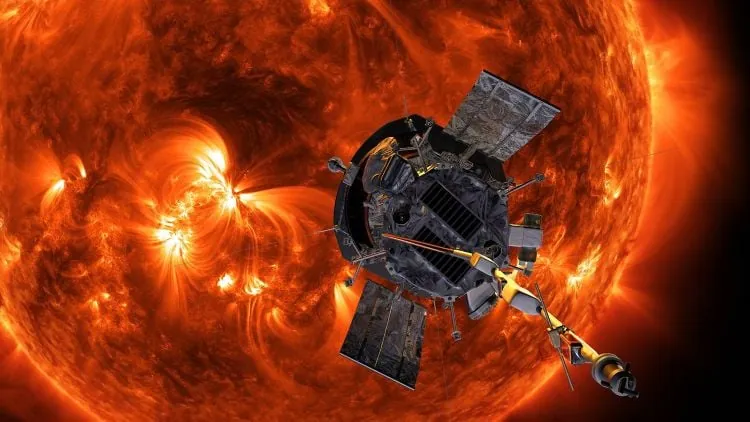
Unlocking the Secrets of the Sun: New Discoveries on Coronal Heating and Solar Wind
2025-08-30
Author: Olivia
Revolutionary Insights from the Sun's Outer Atmosphere
What powers our Sun's relentless solar wind and searing heat? A groundbreaking study published in Physical Review X delves into these mysteries, introducing a fascinating new discovery that could change our understanding of solar phenomena. Researchers have identified a newly recognized barrier, termed the "helicity barrier," that plays a crucial role in how energy transforms into heat within the Sun's outer atmosphere.
Data from NASA’s Parker Solar Probe
This pivotal research utilizes data gathered from NASA's Parker Solar Probe—historically the closest spacecraft to the Sun. With years of observation, the probe has offered invaluable insights into solar mechanics, including energy conversion into heat, a process termed turbulent dissipation. By analyzing the Sun’s magnetic field, plasma dynamics, and the corona, scientists have produced compelling evidence supporting the existence of the helicity barrier.
What Is the Helicity Barrier?
The helicity barrier reflects a long-suspected boundary where intricate small-scale energies significantly impact plasma heating and solar wind alterations. Dr. Christopher Chen from Queen Mary University of London, a co-author of the study, emphasized its importance: "This paper provides clear evidence of the helicity barrier, shedding light on coronal heating and solar wind acceleration and answering critical questions about the solar atmosphere's temperature signatures."
Implications for Exoplanets and Space Weather
The implications of this research extend beyond our own Sun. Understanding how stars in distant solar systems convert energy to heat may reveal crucial details about exoplanets, including their potential to host life. Moreover, the solar wind is vital to mitigating phenomena like auroras on Earth, yet it can also pose threats to satellites and ground-based infrastructure. Historic events, such as the 1859 Carrington Event, underscore the importance of monitoring space weather influenced by solar wind.
Parker Solar Probe: A Journey of Discovery
Since its launch in August 2018, NASA's Parker Solar Probe has shattered records, achieving unprecedented closeness to the Sun—within 6.1 million kilometers (3.8 million miles) of its surface, a feat accomplished on December 24, 2024. This ambitious mission continues to illuminate solar mysteries by employing sophisticated instruments shielded from the Sun's harsh environment. As the probe pushes the boundaries of solar physics, it will ultimately orbit the Sun for millions of years, even after its fuel runs out.
The Future of Solar Research
As we await further revelations about the Sun's helicity barrier in the coming years, one thing is certain: the quest for knowledge about our universe continues. Stay curious, and keep looking up!









 Brasil (PT)
Brasil (PT)
 Canada (EN)
Canada (EN)
 Chile (ES)
Chile (ES)
 Česko (CS)
Česko (CS)
 대한민국 (KO)
대한민국 (KO)
 España (ES)
España (ES)
 France (FR)
France (FR)
 Hong Kong (EN)
Hong Kong (EN)
 Italia (IT)
Italia (IT)
 日本 (JA)
日本 (JA)
 Magyarország (HU)
Magyarország (HU)
 Norge (NO)
Norge (NO)
 Polska (PL)
Polska (PL)
 Schweiz (DE)
Schweiz (DE)
 Singapore (EN)
Singapore (EN)
 Sverige (SV)
Sverige (SV)
 Suomi (FI)
Suomi (FI)
 Türkiye (TR)
Türkiye (TR)
 الإمارات العربية المتحدة (AR)
الإمارات العربية المتحدة (AR)